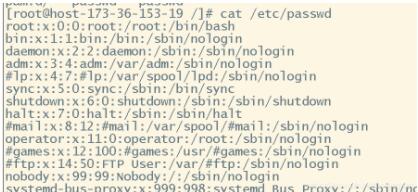
cat /etc/passwd

groupadd zhangsangroup #创建用户组zhangsangroup useradd -g zhangsan zhangsan 创建用户zhangsan并加入zhangsangroup组
useradd parameters:
-u UID: Specify UID, this UID must be greater than or equal to 500, and there is no UID occupied by other users
-g GID/GROUPNAME: Specify the default group, which can be GID or GROUPNAME, and must also exist
-G GROUPS: Specify additional groups
-c COMMENT: Specify the user’s comment information
-d PATH: Specify the user’s home directory
useradd user3 #新增用户 usermod –l u1 user1 #将用户user1的登录名改为u1 usermod –d /users/us1 user1 #将用户 user1家目录改为/users/us1 usermod –g users user1 #将用户user1加入到 users组中, userdel user3 #删除用户 userdel –r user3 #删除用户并删除家目录 groupadd users #添加一个用户组users groupmod –n user users #修改组名user为users groupdel users 删除组users
command can view the UID and GID of a user, for example: id user4
command can view the user’s main Directory, startup shell, user name, address, phone number and other information. Example: finger user4
gpasswd –a user1 users #把 user1加入users组 gpasswd –d user1 users #把 user1退出users组
chmod -R 777 /var/lib/mysql #表示修改文件为最高权限
chown -R mysql:mysql /var/lib/mysql
[root@zhz home]# groupadd monster
[root@zhz home]# useradd -g monster tom
The above is the detailed content of How to create a user and specify a user group in Linux. For more information, please follow other related articles on the PHP Chinese website!




